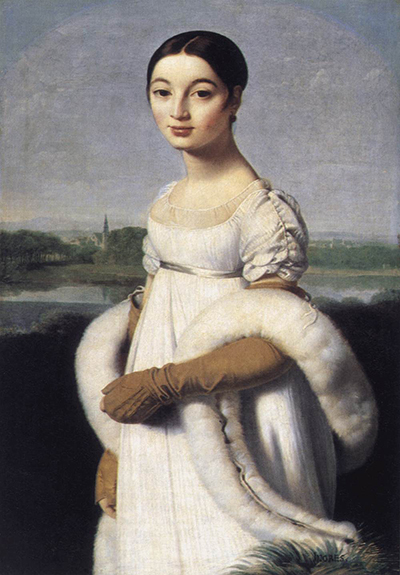This painting by Ingres, a portrait of Mademoiselle Caroline Rivière, was donated to the Louvre, Paris in around 1870 by her sister-in-law. It remains one of the artist's most respected portrait paintings, of which he produced many during his extensive career.
Mademoiselle Caroline Rivière is clearly a natural beauty who was well suited to Ingres' work. He adds to this with some carefully planned choices for her clothing. The result is a truly stunning beauty, one of his finest pieces. Ingres was an artist who liked to spend time with his models before starting work, attempting to understand their characters so that his work could be as accurate as possible. We can, therefore, learn a little more about each person in his portraits through their facial features, expressions and poses. One can only imagine from this painting that Rivière is a sweet, pure-minded young woman, as that is the perception presented by the artist. It is the furs in which she is draped that are perhaps the most memorable additions to this piece.
The vast majority of Ingres' commissioned pieces were of high ranking individuals, or in this case, someone closely connected to such people. The artist produced three portraits of this family, with Caroline's father, Philibert, being a well connected individual who was a part of the Napoleon empire. It is believed that Caroline was only in her early teens in this portrait, perhaps slightly disguised by the elegant and lady-like clothing and makeup that she wore for this sitting. Ingres described her as a "ravishing daughter", an observation that he then carried across into the final piece.
The artwork was completed in 1806, many years before arriving at the Louvre. This date is significant, as it was around this time that Ingres was producing a number of portraits in order to establish his reputation and also spread his connections within high society. His preference was for history paintings, but these projects were rarer and harder to obtain. He would later reduce his portraiture work as his reputation strengthened, but this was an important stage in his development. The two other paintings in his series of this family were of Caroline's two parents, captured individually in two fairly relaxed scenes from a year earlier.




